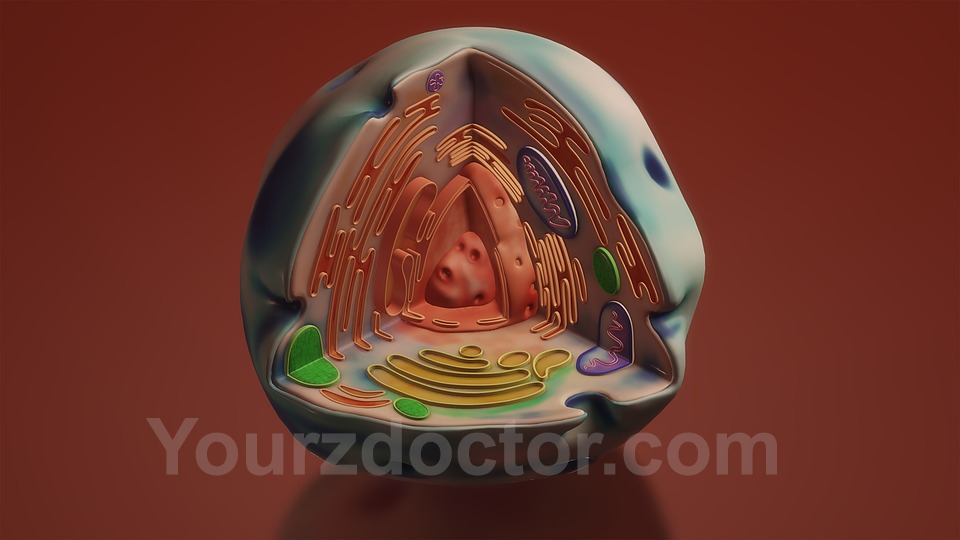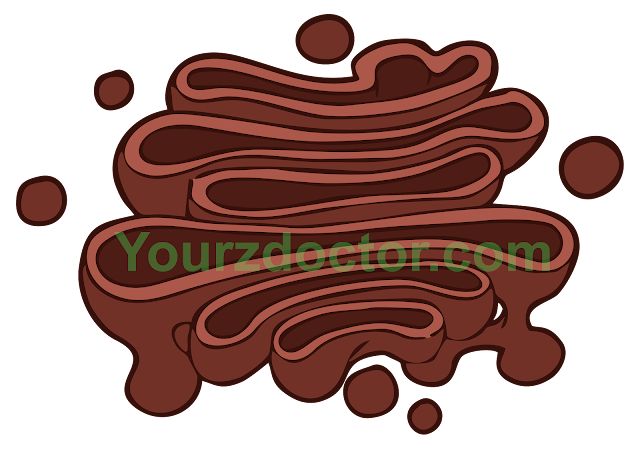Th cell and their Functions
Organization of the cell:
Two major corridor of cells are nexus and the cytoplasm. The nexus is separated from the cytoplasm by a nuclear membrane, and the cytoplasm is separated from the girding fluid by a cell membrane, also called the tube membrane.
The different substances that make up the cell are inclusively called protoplasm.
• protoplasm is composed substantially of five substances water, electrolytes, proteins, lipids, and carbohydrates
Water:
Lons:
Also, they're necessary for operation of some of the cellular control mechanisms. For case, ions acting at the cell membrane are needed for transmission of electrochemical impulses in whim-whams and muscle filaments.
Proteins:
After water, the most abundant substances in utmost cells are proteins, which typically constitute 10 to 20 percent of the cell mass. These are often divided into 2 sorts
• structural proteins and
• functional proteins
• Structural proteins are present in the cell substantially in the form of long fibers that are polymers of numerous individual protein motes.
A prominent use of similar intracellular fil aments is to form microtubules that give the cytoskeleton of similar cellular organelles as cilia, whim-whams axons, the mitotic spindles of mitosing cells, and a tangled mass of thin filamentous tubuiles that hold the corridor of the cytoplasm and nucleoplasti together in their separate chambers.
Extracellularly, fibrillar proteins are plant especially in the collagen and elastin filaments of connective towel and in blood vessel walls, tendons, ligaments, and so forth.
• The functional proteins are an entirely different type of protein, generally composed of combinations of a many motes in tubular-spherical form. These proteins are substantially the enzymes of the cell and, in discrepancy to the fibrillar proteins, are frequently mobile in the cell fluid.
Also, numerous of them are glutinous to membranous structure inside the cell. The enzymes come into direct con tactfulness with other substances in the cell fluid and thereby beget specific intracellular chemical responses.
For case, the chemical responses that resolve glucose into its element corridor and also combine these with oxygen to form carbon dioxide and water while contemporaneously furnishing energy for cellular they are all catalyzed by a variety of protein enzymes.
Lipids:
Lipids are several types of substances that are grouped together because of their common property of being answerable in fat detergents.
The sig nificance of phospholipids and cholesterol is that they're substantially undoable in water and, thus, are used to form the cell membrane and intracellular membrane walls that separate the different cell chambers.
In addition to phospholipids and cholesterol, some cells contain large amounts of triglycerides, also called neutral fat, In the fat cells, triglycerides frequently regard for as important as 95 percent of the cell mass.
The fat stored in these cells represents the body's main storage of energy- giving nutrients that can latterly be dissoluted and used to give energy wherever in the body it's demanded.
Carbohydrates:
Carbohydrates have little structural function in the cell except as corridor of glycoprotein spook ecules, but they play a major part in nutrition of the cell. Utmost mortal cells don't maintain large stores of carbo hydrates;
the quantum generally pars about 1 percent of their total mass but increases to as important as 3 in muscle cells and, sometimes, 6 percent in liver cells. Still, carbohydrate in the form of dissolved glucose is always present in the girding extracellular fluid so that it's readily available to the cell.
Also, a small quantum of carbohydrate is stored in the cells in the form of glycogen, which is an undoable polymer of glucose that can be depolymerized and used fleetly to supply the cells' energy requirements.
Physical Structure of the Cell:
The cell isn't simply a bag of fluid, enzymes, and chemicals; it also contains largely systematized physical structures, called intracellular organelles. The physical nature of each organelle is as important as the cell's chemical ingredients for cell function.
For case, without one of the organelles, the mitochondria, further than 95 percent of the cell's energy release from nutrients would cease incontinently. The most important organelles and other structures of the cell are shown in Figure.
Cell membrane:
Its introductory structure is a lipid bilayer, which is a thin, double- layered film of lipids- each subcaste only one patch thick- that is nonstop over the entire cell face. Interspersed in this lipid film are large spherical protein motes,
The introductory lipid bilayer is composed of phospholipid motes. One end of each phospholipid patch is answerable in water; that is, it's hydrophilic. The other end is answerable only in fats; that is, it's hydrophobic. The phosphate end of the phospholipid is hydrophilic, and the adipose acid portion is hydrophobic.
Because the hydrophobic portions of the phospholipid motes are repelled by water but are mutually attracted to one another,The hydrophilic phosphate portions also constitute the two shells of the complete cell membrane, in contact with intracellular water on the inside of the membrane and extracellular water on the outside face.
The lipid subcaste in the middle of the membrane is impermeable to the usual water-answerable substances, similar as ions, glucose, and urea. Again, fat-answerable Sub stations, similar as oxygen, carbon dioxide, and alcohol, can access this portion of the membrane with ease.
Cytoplasm and its organelles:
Dispersed in the cytoplasm are neutral fat droplets, glycogen grains, ribosomes, secretory vesicles, and five especially important organelles the endoplasmic reticulum, the Golgi outfit, mitochondria, lysosomes, and peroxisomes.
Endoplasmic Reticulum:
Figure shows a network of tubular and flat vehicular structures in the cytoplasm; this is the endoplasm mic reticulum. The tubules and vesicles connect with one another.
Also, their walls are constructed of lipid bilayer membranes that contain large quantities of proteins, analogous to the cell membrane. The total sur face area of this structure in some cells- the liver cells, for case- can be as important as 30 to 40 times the cell membrane area.
The specified shape of a small part of endoplasmic reticulum is proven inFigure. The area within the tubules and vesicles is packed with endoplasmic matrix, Electron micrographs display that the area inside the endoplasmic reticulum is connected with the space between the two membrane shells of the nuclear membrane.
Substances formed in some corridor of the cell enter the space of the endoplasmic reticulum and are also con ducted to other corridor of the cell. Also, the vast face area of this reticulum and the multiple enzyme systems attached to its membranes give ministry for a major share of the metabolic functions of the cell.
Ribosomes and the Granular Endoplasmic Reticulum:
Agranular endoplasmic Reticulum:
Golgi Apparatus:
It's generally composed of four or further piled layers of thin, flat, enclosed vesicles lying near one side of the nexus. This outfit is prominent in secretory cells, where it's located on the side of the cell from which the secretory substances are extruded.
The Golgi outfit functions in association with the endoplasmic reticulum. As shown in Figure small" transport vesicles( also called endoplasmic reticulum vesicles, or ER vesicles) continually pinch of from the endoplasmic reticulum and shortly later fuse with the Golgi outfit.
Lysosomes:
It's girdled by a typical lipid bilayer membrane and is filled with large figures of small grains 5 to 8 nanometers in periphery, which are protein summations of as numerous as 40 different hydrolase( digestive) enzymes.
A hydrolytic enzyme is able of unyoking an organic emulsion into two or further corridor by combining hydrogen from a water patch with one part of the emulsion and combining the hydroxyl portion of the water patch with the other part of the emulsion.
For case, protein is hydrolyzed to form amino acids, glycogen is hydrolyzed to form glucose, and lipids are hydrolyzed to form adipose acids and glycerol.
Naturally, the membrane girding the lysosome prevents the enclosed hydrolytic enzymes from coming in contact with other substances in the cell and, thus, prevents their digestive conduct. Still, some conditions of the cell break the membranes of some of the lysosomes, allowing release of the digestive enzymes.
These enzymes also resolve the organic substances with which they come in contact into small, largely diffusible substances similar as amino acids and glucose.
Nucleus:
The nexus is the control center of the cell. Compactly, the nexus contains large amounts of DNA, which are the genes. The genes determine the characteristics of the cell's proteins, including the structural proteins, as well as the intracellular enzymes that control cytoplasmic and nuclear conditioning.
The genes also control and promote reduplication of the cell itself. The genes first reproduce to give two identical sets of genes; also the cell splits by a special process called mitosis to form two son cells,










0 Comments